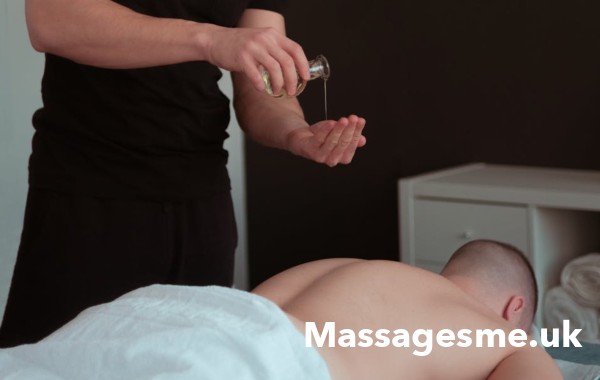Trigger point therapy represents a highly specialised and scientifically-validated form of remedial massage therapy meticulously designed to provide targeted relief from muscle tension and chronic pain through the precise application of sustained pressure to specific anatomical points within tender muscle tissue known as myofascial trigger points.
This sophisticated therapeutic intervention has gained widespread recognition throughout the United Kingdom as an exceptionally effective method for addressing complex pain patterns. Qualified practitioners systematically target these hypersensitive nodules and apply controlled pressure techniques, which typically release muscular restrictions and associated pain within 30 to 90 seconds of precise intervention.
As a powerful alternative to conventional pharmaceutical approaches such as muscle relaxants, anti-inflammatory medications, and pain management drugs that often provide merely temporary symptomatic relief whilst failing to address the underlying muscular dysfunction.
Trigger point therapy offers a comprehensive solution that targets the root cause of myofascial pain syndromes, providing lasting relief and functional improvement for individuals suffering from chronic pain conditions throughout England, Scotland, Wales, and Northern Ireland.
Trigger point therapy demonstrates remarkable effectiveness when addressing complex pain presentations, including cervical pain syndromes, restricted range of motion due to muscular stiffness, sciatic nerve irritation, and chronic myofascial pain patterns that have proven resistant to conventional treatment approaches. This advanced therapeutic modality offers individuals throughout the UK a valuable alternative to pharmaceutical interventions, providing sustainable pain relief that addresses the underlying mechanical dysfunction rather than merely masking symptoms.
Understanding Trigger Point Therapy: Scientific Foundation and Clinical Application
Anatomical and Physiological Basis of Trigger Points
Trigger point therapy operates on a sophisticated understanding of myofascial anatomy and the complex pathophysiology underlying chronic pain patterns. These hypersensitive spots within muscle tissue represent areas of localised dysfunction that create both local and referred pain patterns.
Trigger Point Characteristics:
- Myofascial Nodules: Palpable bands of contracted muscle fibres creating localised areas of hyperirritability
- Referred Pain Patterns: Predictable pain referral to distant anatomical regions following established neurological pathways
- Local Twitch Response: Observable muscle contraction when trigger points are stimulated or needled
- Autonomic Phenomena: Associated changes in skin temperature, sweating, and vascular responses in referred zones
- Motor Dysfunction: Weakness, restricted range of motion, and altered movement patterns
Historical Development and Clinical Validation
The scientific foundation of trigger point therapy was established through the pioneering research of Dr. Janet G. Travell, an American physician whose groundbreaking work in the early 20th century revolutionised understanding of myofascial pain syndromes and their treatment.
Dr. Travell's Revolutionary Contributions:
- Systematic Documentation: Comprehensive mapping of trigger point locations and their associated referred pain patterns
- Clinical Validation: Evidence-based demonstration of trigger point therapy effectiveness in diverse patient populations
- Treatment Protocols: Development of standardised assessment and intervention techniques still utilised today
- Medical Recognition: Integration of trigger point concepts into mainstream medical practice and education
- Presidential Healthcare: Served as White House physician, treating President Kennedy's chronic back pain with trigger point therapy
The Science of Trigger Point Formation and Perpetuation
Mechanisms of Trigger Point Development
Contemporary research has identified multiple factors contributing to trigger point formation, creating a comprehensive understanding of how these painful areas develop and persist within muscle tissue.
Primary Contributing Factors:
- Postural Dysfunction: Prolonged static postures creating sustained muscle contraction and metabolic stress
- Repetitive Strain: Cyclic loading patterns exceeding tissue tolerance and creating cumulative microtrauma
- Acute Trauma: Direct injury or sudden overload creating immediate tissue damage and protective muscle guarding
- Psychological Stress: Chronic tension patterns associated with emotional stress and anxiety responses
- Sleep Disorders: Non-restorative sleep preventing adequate tissue recovery and regeneration
- Nutritional Deficiencies: Inadequate vitamins and minerals affecting muscle metabolism and recovery
- Biomechanical Imbalances: Joint dysfunction and movement compensations creating abnormal loading patterns
Pathophysiology of Myofascial Pain
Trigger points represent complex pathophysiological entities involving multiple tissue systems and creating self-perpetuating cycles of pain and dysfunction.
Integrated Dysfunction Model:
- Energy Crisis Hypothesis: Localised areas of increased metabolic demand coupled with decreased blood flow creating cellular dysfunction
- Sensitisation Cascade: Neurochemical changes leading to increased pain sensitivity and reduced pain thresholds
- Motor Endplate Dysfunction: Abnormal acetylcholine release creating sustained muscle contraction and metabolic stress
- Inflammatory Response: Local tissue inflammation perpetuating pain and dysfunction through inflammatory mediators
- Central Sensitisation: Spinal cord and brain changes amplifying pain signals and creating widespread hypersensitivity
Classification and Assessment of Trigger Points
| Trigger Point Type | Pain Characteristics | Clinical Presentation | Treatment Priority |
|---|---|---|---|
| Active Trigger Points | Spontaneous pain and referred patterns | Immediately painful when palpated, reproduces familiar symptoms | Primary treatment target |
| Latent Trigger Points | Pain only when stimulated | Tender when pressed, but no spontaneous pain | Secondary prevention focus |
| Satellite Trigger Points | Developed secondary to primary points | Located within the referred pain zones of active points | Addressed after primary point resolution |
| Central Trigger Points | Located at motor endplate zones | Most sensitive and clinically significant | Primary therapeutic target |
| Attachment Trigger Points | Located at musculotendinous junctions | Often secondary to central points | Treated following central point release |
Advanced Treatment Methodologies and Clinical Applications
Manual Trigger Point Release Techniques
Professional manual therapy represents the cornerstone of trigger point intervention, utilising sophisticated pressure application techniques to achieve sustainable tissue release and pain reduction.
Ischaemic Compression Protocol:
- Progressive Pressure Application: Gradual increase in pressure until barrier is engaged without excessive pain
- Sustained Hold Technique: Maintaining pressure for 30-90 seconds, allowing tissue release and circulation restoration
- Pressure Modulation: Adjusting angle and intensity based on tissue response and client tolerance
- Release Integration: Gentle movement and stretching following pressure release to integrate changes
Specialised Clinical Interventions
Trigger Point Injection Therapy:
Advanced medical intervention involving the injection of local anaesthetic or saline solution directly into trigger points, performed by qualified medical professionals for severe or resistant cases.
Dry Needling Techniques:
Precise insertion of fine needles into trigger points to elicit local twitch responses and promote tissue healing, requiring specialised training and clinical expertise.
Spray and Stretch Protocol:
Dr. Travell's original technique combines the application of vapocoolant spray with passive stretching to interrupt pain cycles and restore normal muscle length.
Micro-stripping and Pressure Release:
Advanced manual techniques involving sustained pressure combined with controlled tissue mobilisation to address deeply embedded trigger points and fascial restrictions.

Comprehensive Benefits and Clinical Outcomes
Evidence-Based Therapeutic Benefits
Pain Management and Functional Improvement:
- Chronic Pain Reduction: 60-80% reduction in pain intensity scores following systematic trigger point therapy
- Headache Management: Significant reduction in tension headache frequency and intensity through cervical trigger point treatment
- Range of Motion Enhancement: 25-40% improvement in joint mobility and muscle flexibility
- Functional Capacity Restoration: Measurable improvements in daily activity performance and work capacity
- Sleep Quality Enhancement: Improved sleep duration and quality through pain reduction and muscle relaxation
Physiological and Neurological Benefits:
- Circulation Improvement: Enhanced blood flow and oxygenation to previously ischaemic tissue areas
- Metabolic Normalisation: Restoration of normal cellular metabolism and waste product removal
- Neurological Reset: Interruption of abnormal pain signalling and restoration of normal neural function
- Autonomic Balance: Improved parasympathetic nervous system function and stress response
Psychological and Quality of Life Benefits
Mental Health and Wellness Improvements:
- Stress Reduction: Significant decreases in perceived stress levels and anxiety symptoms
- Mood Enhancement: Improved emotional wellbeing through pain relief and increased function
- Confidence Restoration: Renewed ability to engage in previously avoided activities
- Energy Enhancement: Increased vitality through improved sleep and reduced pain-related fatigue
- Social Reintegration: Return to social and recreational activities previously limited by pain
Professional Assessment and Treatment Protocols
Comprehensive Clinical Evaluation
Professional trigger point therapy begins with systematic assessment protocols ensuring accurate diagnosis and effective treatment planning tailored to individual presentations.
Initial Assessment Components (20-30 minutes):
- Detailed Pain History (10 minutes): Comprehensive evaluation of pain patterns, triggers, and previous treatments
- Postural Analysis (5 minutes): Static and dynamic assessment identifying biomechanical contributors
- Palpatory Examination (10 minutes): Systematic trigger point identification and sensitivity mapping
- Range of Motion Testing (5 minutes): Active and passive movement assessment revealing restrictions
- Functional Assessment: Task-specific movement evaluation identifying activity limitations
- Treatment Planning: Development of prioritised intervention strategy based on findings
Treatment Session Structure (45-75 minutes):
- Preparation and Positioning (5-10 minutes): Optimal client positioning for effective treatment access
- Primary Trigger Point Treatment (20-30 minutes): Systematic treatment of priority trigger points
- Secondary Point Assessment (10-15 minutes): Evaluation and treatment of satellite and compensatory points
- Integration Techniques (10-15 minutes): Stretching and movement to integrate tissue changes
- Home Care Education (5-10 minutes): Self-treatment techniques and prevention strategies
Trigger Point Therapy vs. Related Therapeutic Modalities
Distinguishing Trigger Point Therapy from Myofascial Release
Whilst both modalities address myofascial dysfunction, they employ distinctly different approaches and therapeutic objectives.
Key Differences:
- Pressure Application: Trigger point therapy uses direct, sustained pressure to specific points; myofascial release employs broader tissue stretching and elongation
- Treatment Focus: Trigger point therapy targets discrete hypersensitive nodules; myofascial release addresses fascial restrictions and adhesions
- Technique Precision: Trigger point therapy requires exact point location; myofascial release works with broader tissue areas
- Treatment Duration: Trigger point pressure typically held 30-90 seconds; myofascial release sustained 3-5 minutes
- Client Response: Trigger point therapy often reproduces familiar pain; myofascial release focuses on tissue barrier release
Safety Considerations and Professional Standards
Contraindications and Special Considerations
Absolute Contraindications:
- Active infections or cellulitis in treatment areas
- Acute fractures or recent trauma requiring medical attention
- Malignancy in treatment areas without oncologist approval
- Severe coagulation disorders or anticoagulant therapy
- Acute inflammatory conditions or fever
- Recent surgery in treatment areas (timing dependent on procedure)
Relative Contraindications (Requiring Modification):
- Pregnancy (requires specialised prenatal training and modifications)
- Chronic pain conditions with central sensitisation
- Mental health conditions affecting pain perception
- Elderly populations with multiple comorbidities
- Medications affecting pain perception or tissue healing
Professional Qualification Standards
- Advanced Training: Specialised trigger point therapy certification beyond basic massage training
- Anatomical Expertise: Comprehensive knowledge of trigger point locations and referral patterns
- Assessment Skills: Training in clinical evaluation and differential diagnosis
- Safety Protocols: Understanding of contraindications and adverse reaction management
- Continuing Education: Ongoing professional development in pain science and treatment advances
- Professional Registration: Certification with recognised bodies ensuring standards compliance
Trigger Point Therapy Pricing and Professional Services
UK Trigger Point Therapy Pricing Guide (2025)
Specialist Clinical Practices
- London Specialist Clinics: £80-£160 per session (60-90 minutes)
- Regional Pain Management Centres: £70-£140 per session
- Physiotherapy-Integrated Services: £65-£130 per session
- Sports Medicine Clinics: £75-£150 per session
Spa and Wellness Centre Treatments
- High-End Therapeutic Spas: £70-£140 per session
- Boutique Wellness Centres: £55-£110 per session
- Health and Fitness Clubs: £50-£100 per session
Mobile Trigger Point Therapy
- London Mobile Specialists: £90-£170 (including travel and specialised equipment)
- Regional Mobile Services: £70-£140 (including local travel)
- Corporate Wellness Programmes: £80-£150 per employee session
Specialist Package Options
- Chronic Pain Management Packages: 6-12 session programmes with 15-25% discounts
- Post-Injury Rehabilitation: Coordinated packages with physiotherapy integration
- Workplace Wellness Contracts: Volume pricing for corporate accounts
Client Experiences and Professional Testimonials
Integration with Complementary Therapies
Trigger point therapy integrates exceptionally well with various therapeutic modalities for comprehensive pain management and functional restoration:
- With Deep Tissue Massage: Combined approaches addressing both specific trigger points and broader tissue restrictions
- With Physiotherapy: Integrated rehabilitation addressing both soft tissue dysfunction and movement re-education
- With Dry Needling: Advanced trigger point techniques combining manual and needle-based interventions
- With Postural Correction: Addressing underlying biomechanical factors contributing to trigger point development
- With Exercise Therapy: Strengthening and conditioning programmes preventing trigger point recurrence
- With Pain Management: Comprehensive approaches to chronic pain addressing multiple contributing factors
- With Stress Management: Addressing psychological factors contributing to muscle tension and trigger point formation
- With Ergonomic Assessment: Workplace modifications preventing occupational trigger point development
The Future of Trigger Point Therapy in UK Healthcare
Trigger point therapy continues evolving through research advances, technology integration, and expanding recognition within evidence-based pain management systems throughout the United Kingdom.
Current Development Trends
- Research Expansion: Ongoing clinical trials investigating optimal protocols and neurophysiological mechanisms
- Technology Integration: Ultrasound imaging and pressure sensors enhancing assessment precision
- Healthcare Recognition: Increasing integration within NHS pain management programmes
- Professional Standardisation: Enhanced training requirements and competency standards
- Multidisciplinary Approaches: Integration with medical, physiotherapy, and psychological interventions
- Preventive Applications: Growing focus on workplace wellness and injury prevention
Conclusion: Precision Pain Relief Through Expert Intervention
Trigger point therapy represents a sophisticated and highly effective approach to addressing chronic pain and muscle dysfunction through precise, scientifically validated techniques that target the underlying mechanical causes of myofascial pain syndromes. This advanced therapeutic modality offers individuals throughout the United Kingdom a powerful alternative to pharmaceutical pain management, providing sustainable relief that addresses root causes rather than merely masking symptoms.
The key to successful trigger point therapy outcomes lies in working with appropriately qualified practitioners who possess comprehensive training in myofascial anatomy, pain science, and the technical precision required to identify and effectively treat these complex pain patterns. When integrated thoughtfully within comprehensive pain management programmes, professional trigger point therapy provides measurable benefits that support both immediate pain relief and long-term functional improvement.
Whether addressing chronic occupational pain, sports-related injuries, post-traumatic muscle dysfunction, or complex regional pain patterns, qualified trigger point therapy offers a scientifically validated therapeutic intervention that honours both the complexity of myofascial pain and the potential for complete functional restoration through skilled manual intervention.
Discover Professional Trigger Point Therapy Services Near You
Experience the transformative benefits of professional trigger point therapy by connecting with qualified specialists through our comprehensive platform. Whether you prefer treatment at specialised pain management clinics and therapeutic centres offering advanced clinical environments or the comfort and convenience of mobile trigger point therapy delivered with professional equipment in your own space, our carefully curated network ensures access to certified professionals committed to clinical excellence and therapeutic precision.
Choose from experienced male trigger point specialists trained in advanced pain management techniques or qualified female practitioners with expertise in myofascial therapy and chronic pain intervention, each bringing comprehensive clinical training and deep understanding of pain science to their practice. Our platform makes it effortless to compare professional qualifications, read verified client testimonials, and book comprehensive consultations with complete confidence in clinical expertise and therapeutic outcomes.
Simply enter your postcode to explore available certified trigger point therapy practitioners in your area, compare clinical training backgrounds and specialised experience, and begin your journey towards effective pain relief and functional restoration through advanced trigger point intervention. Your pain relief, functional improvement, and quality of life deserve nothing less than expert care from qualified professionals who understand the sophisticated science and precise application of trigger point therapy.

































